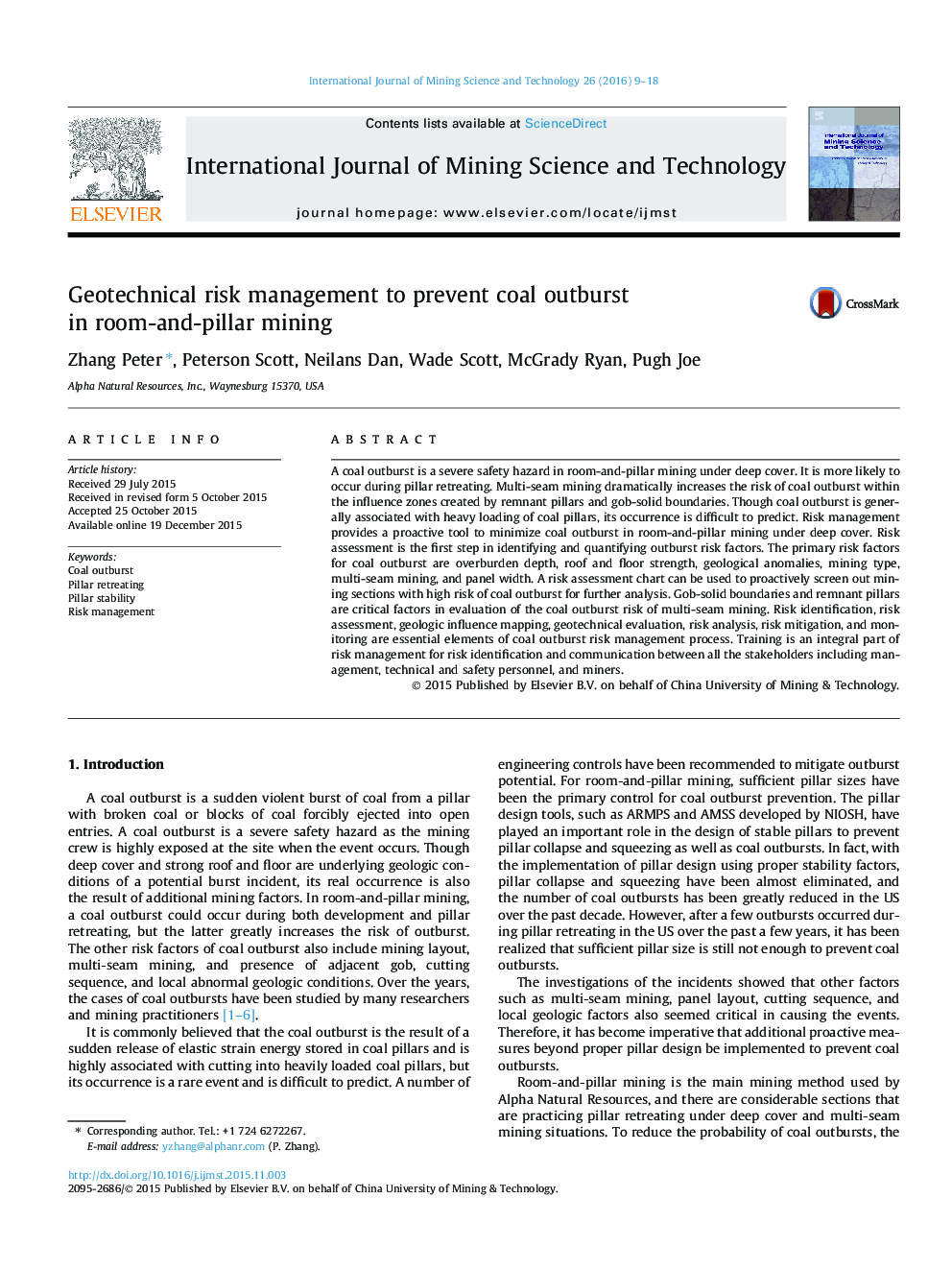| Article ID | Journal | Published Year | Pages | File Type |
|---|---|---|---|---|
| 275395 | International Journal of Mining Science and Technology | 2016 | 10 Pages |
A coal outburst is a severe safety hazard in room-and-pillar mining under deep cover. It is more likely to occur during pillar retreating. Multi-seam mining dramatically increases the risk of coal outburst within the influence zones created by remnant pillars and gob-solid boundaries. Though coal outburst is generally associated with heavy loading of coal pillars, its occurrence is difficult to predict. Risk management provides a proactive tool to minimize coal outburst in room-and-pillar mining under deep cover. Risk assessment is the first step in identifying and quantifying outburst risk factors. The primary risk factors for coal outburst are overburden depth, roof and floor strength, geological anomalies, mining type, multi-seam mining, and panel width. A risk assessment chart can be used to proactively screen out mining sections with high risk of coal outburst for further analysis. Gob-solid boundaries and remnant pillars are critical factors in evaluation of the coal outburst risk of multi-seam mining. Risk identification, risk assessment, geologic influence mapping, geotechnical evaluation, risk analysis, risk mitigation, and monitoring are essential elements of coal outburst risk management process. Training is an integral part of risk management for risk identification and communication between all the stakeholders including management, technical and safety personnel, and miners.
